Raising Kids with a Secure Attachment Style
5 steps co-parents can take to build secure attachments with their children.
- 8 min read
- guest author
- child development
- health & wellness
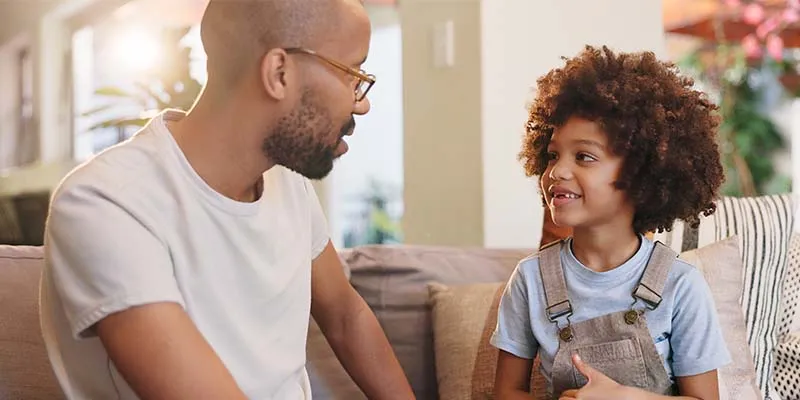
Every parent wants a secure attachment style, but many fear that their kids are born at a disadvantage because of their own attachment styles growing up. Although there’s certainly some truth to inherited attachment patterns, the way we raise our children can absolutely result in secure attachment.
Creating or enhancing a secure attachment style can benefit your family’s well-being now and positively affect all future relationships. When you heal yourself, you heal your children’s children. This article will cover what the various attachment styles mean, as well as give you five steps to help you be—and raise—a securely attached person.
What is attachment theory?
Attachment theory states that our early relationships with primary caregivers shape our perception and behavior in relationships throughout our lives. Research suggests that attachment styles develop as children interact with their primary caregivers in early childhood. As children grow, their attachment style affects emotionally intimate relationships, including romantic relationships, friendships, and others.
Researchers also believe we can form secure attachments throughout our lives. However, we can also lose them if previously healthy relationships prove to be unstable or involve childhood trauma. Attachment styles are dynamic, and understanding the different theories can help people recognize their primary style and make positive changes if needed.
What are the main attachment styles?
There are four main styles of attachment: secure, anxious, avoidant, and disorganized. Most people are a blend of more than one style, and different ones can present with various relationships. While these styles show up in adults, they’re rooted in childhood interactions. Additionally, even actions that resemble insecure styles can be normal for securely attached people.
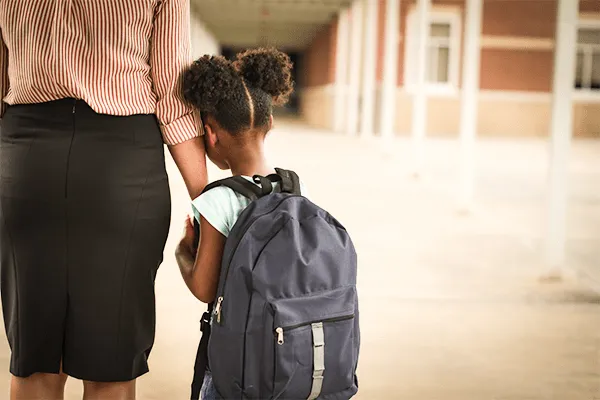
What is anxious attachment?
Anxious attachment, also called ambivalent or preoccupied, is an insecure attachment style that can cause people to feel uncertain and have low self-esteem. People with an anxious attachment style may:
- Be fearful of abandonment or rejection
- Need constant validation and reassurance
- Have difficulty trusting their partners
- Overreact to small conflicts
- Be overly dependent in relationships
Anxious attachment develops in childhood and can be caused by receiving inconsistent caregiving or experiencing emotional neglect. For example, a child may develop an anxious attachment style if their caretakers are sometimes supportive and attentive toward them, but other times are disconnected from their needs.
An important point for children, however, is that separation anxiety is developmentally normal and not always an anxious attachment indicator. Children often have big reactions to small conflicts as they develop emotional regulation. It’s best to hold space for whatever they’re experiencing, knowing that grace and compassion are among the keys to helping them thrive.
What is avoidant attachment?
An avoidant attachment style, sometimes called dismissive, develops in childhood when a child doesn’t receive the care and attention they need to build healthy relationships. People with avoidant attachment often struggle to form close relationships in adulthood. People with this attachment style may:
- Feel discomfort with emotional intimacy
- Struggle to express their emotions and needs
- Be overly independent and self-reliant
- Choose casual relationships over long-term ones
- Feel vulnerable in romantic relationships

Again, it would be best if you refrain from self-diagnosing or diagnosing your child. It’s normal for children to be unable to name emotions or needs, especially if they are still learning and growing at an early age. Emotional maturity takes many years to develop.
What is disorganized attachment?
Disorganized attachment, also known as fearful-avoidant or disordered attachment, can develop because of childhood trauma or other infant-parent attachment issues. Factors like child abuse, domestic violence, or neglect in their early years can also contribute to this style. In adulthood, people with disorganized attachment may:
- Have conflicting desires for closeness and distance
- Feel like they don’t deserve love or closeness
- Struggle to develop and maintain intimate relationships
An insecure attachment style, especially a disorganized one, can also negatively affect not only mental health but also physical health. However, healing and greater well-being are possible with professional support and healthy relationships. If you’re concerned that your child may have a disorganized attachment pattern, especially if they experienced adverse childhood experiences (ACEs), know that positive childhood experiences (PCEs) can be an incredible source of healing.
What is secure attachment?
In adult relationships, securely attached people tend to:
- Feel comfortable with emotional closeness and intimacy
- Embrace healthy independence and autonomy
- Have a solid sense of self-esteem and confidence
- Set healthy boundaries and respect others’ boundaries
- Manage high conflict situations in healthy ways
We can’t look for all of these same traits in children, however, because many of them aren’t developmentally appropriate. Many of these traits take years of practice to develop, which are made easier by the presence and influence of supportive primary caregivers.
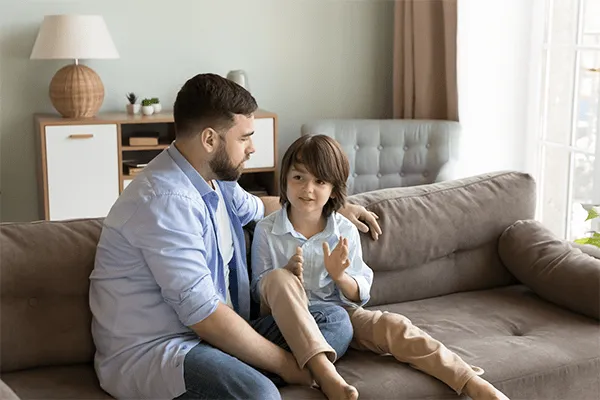
How do I know if my child and I are securely attached?
Often, parents and caregivers think the most “independent” child is the most securely attached—the one who scampers off into new environments without so much as a nod back. While that child may be securely attached, it’s actually more helpful to look at their behavior when they’re sick, scared, or hurt than how they do in everyday situations.
Do they seek comfort from their primary caregivers and settle somewhat quickly when the adult shows up for them? Additionally, in everyday life, do they feel safe enough to push back or question their adult without fear of negative punishment? Do they express joy and seek reconnection if their caregiver has been gone for a while and then returns?
Among other indicators, these are all much stronger suggestions of a secure attachment style than how social or extroverted the child is. Those qualities have much more to do with temperament and learned (or forced) behavior than attachment security.
5 steps to supporting secure attachment and emotional well-being
Securely attached people are better equipped to navigate conflicts, communicate effectively, and maintain a sense of independence. Here are 5 steps you can take to strengthen, solidify, or grow a secure attachment with your child.

1. Focus on the four “S”s of secure attachment
Child development experts say secure attachment comes from helping a child feel seen, safe, soothed, and secure. Here are some examples of each one.
- Seen: Children need to feel seen for their own experience, not the experience adults think they should have. Think of a parent’s response to a child who doesn’t want to play with new kids at a busy playground. Instead of saying, “What’s wrong with you? Don’t you want to have fun?”, they can help them feel seen by saying, “I know that meeting new kids can be a lot, so you decide if and when you want to join them.”
- Safe: Safety goes beyond just physical security—it also includes emotional support. Children with secure attachment styles know that honest communication doesn’t need to hurt. For example, if a child is upset and talks back, the adult won’t go into punitive mode. Instead, the adult will work to understand what’s driving the behavior, tone, and approach the child is using to communicate.
- Soothed: Adults should be mindful of projecting their own feelings onto their children. For example, if a child has regular meltdowns or other issues after school, the adult won’t dismissively say, “You’re okay, school is fun!” Instead, the adult will hold space for their big feelings, listen to their concerns, and provide emotional support rather than being dismissive or forcing the child to “get over it”.
- Secure: Adults don’t have to agree with everything children do or say, but they should work to understand and help where needed. If an older child makes a mistake while exploring a romantic relationship, the adult won’t lock them out of the house or shame them. Instead, they will be a “soft place to land” so the child can process their hurt in a supportive environment. The child trusts the adult to be there with open arms and loving guidance.
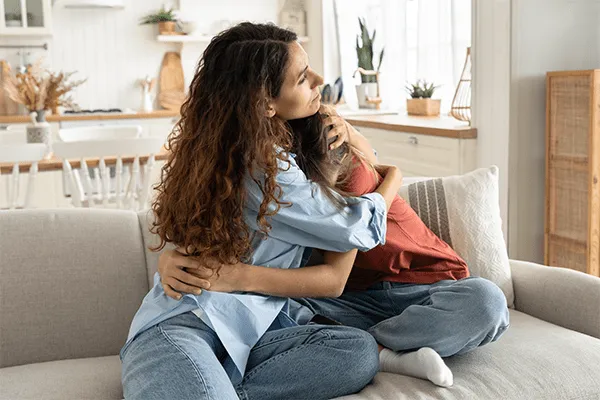
2. Repair when you mess up
It’s critical to be patient and discuss what’s wrong instead of letting things blow over. The avoidant strategy of moving on is a temporary solution. Although this is especially true in adult relationships, it applies to parent-child dynamics, too. When we own our mistakes and ask for forgiveness, we model healthy repair. This skill helps children navigate friendships and, later, adult relationships. Saying an authentic “I’m sorry” is a gift to the relationship and the child’s heart.
3. Remember that to discipline is to teach, not punish
Discipline is meant to teach, not punish, and mutual respect is healthier than forced compliance. Although it’s possible for children to develop secure attachments in punitive homes, it’s harder than it needs to be for everyone involved. Whether you choose conscious, respectful, authoritative, or other parenting styles, raising children in ways that do not harm supports healthy attachment. If you’re unsure how to adopt this approach, this evidence-based, heart-centered book can help.
4. Heal what needs healing (for YOU)
This step is especially helpful for mothers, but anyone who wants healing should seek it. A mother’s poor mental health can impact her ability to bond with her child, while improved mental health can make the parent-child relationship more secure. Achieving this may involve re-parenting yourself, working with a therapist, or developing supportive relationships. Your happiness matters.
5. View today’s parenting choices as an investment in tomorrow’s relationship
For those with insecure attachment, it can be tempting to “squash bad behavior” the moment it comes up. Keep in mind that attention-seeking behavior is actually an attempt to connect, and squashing it can leave the parent and child feeling disconnected. In healthy relationships, people show up for each other even when they’re struggling. Responding peacefully to children increases their sense of safety and security and helps them learn from positive influences.

What if my co-parent leads with an insecure attachment style?
Understanding insecure attachment styles may leave some parents wondering if it’s harmful for children to have one parent with a secure attachment style and another with an insecure attachment style. It’s tough if one parent deals with co-parenting anxiety and disconnection while the other parent bad-mouths the other one out to be the “bad guy”. Thankfully, it only takes one adult with a secure attachment for a child to reap the benefits and learn how to:
- Identify negative patterns and behaviors and choose a secure path that’s familiar to them
- Develop emotional regulation and emotional intelligence
- Model healthy communication and conflict resolution skills
- Build a support network of other securely attached individuals
- Learn and maintain healthy self-reflection, communication, and conflict-resolution skills
What can be done if my child is picking up an insecure attachment pattern?
You can get the support you need to protect your children’s physical and emotional well-being and any healing you deserve for yourself. Understanding our emotions, learning to communicate openly, and raising our emotional awareness can result in the personal growth needed to thrive as a family. Seeking support is one of the bravest things you can do for yourself and your children.
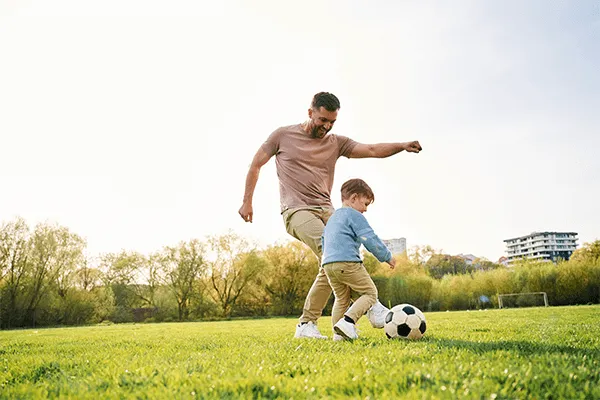
How else can I promote secure attachment through parenting?
Your parenting style can directly influence your child’s attachment style. Strategies for promoting secure attachment in your children include:
- Being attuned to their feelings and needs
- Providing emotional support and validation
- Providing healthy boundaries and solving problems collaboratively
- Encouraging independence without forcing them to be too independent too soon
- Knowing enough about child development to be able to meet your child where they are, keeping realistic expectations
Again, if a child has at least one close adult in their life who can model and offer a secure attachment style, they can reap all the benefits of it. While it’s helpful if you and your co-parent are on the same page, it’s not a requirement for raising a securely attached child. Your children can absolutely heal and thrive if it’s “just you”, and so can you.